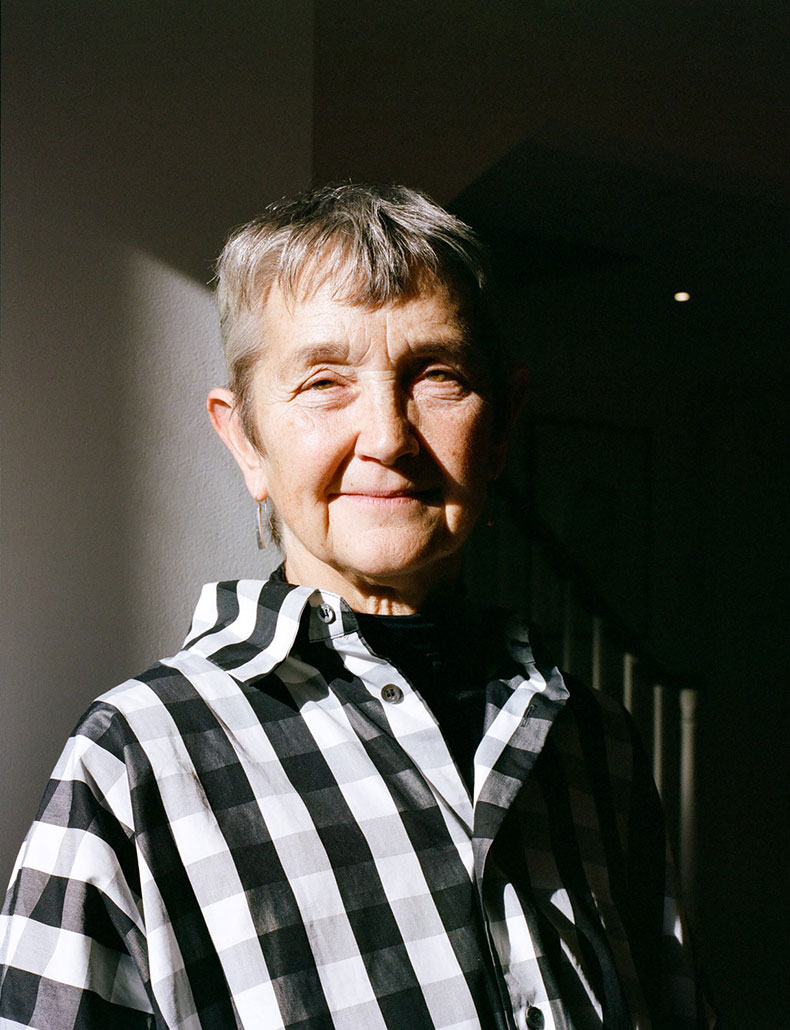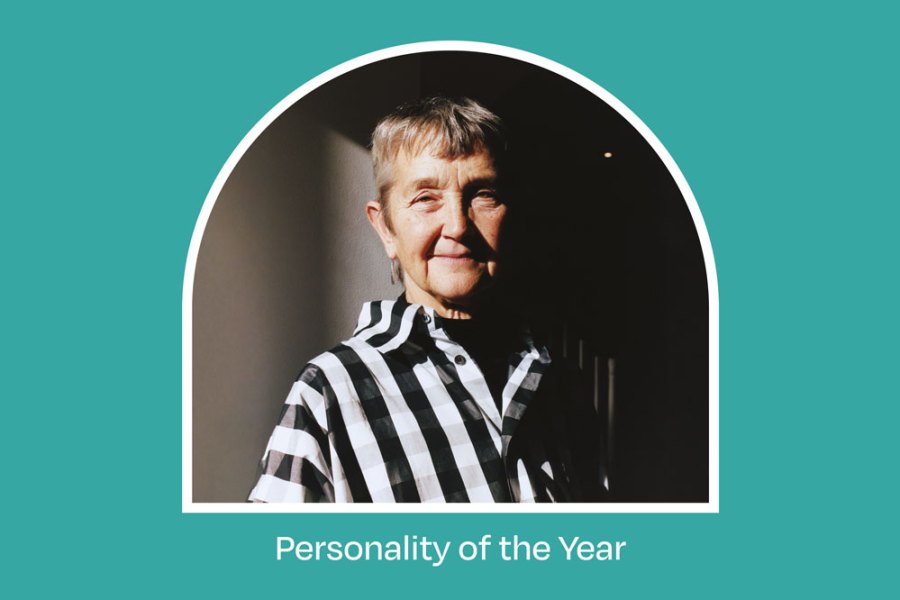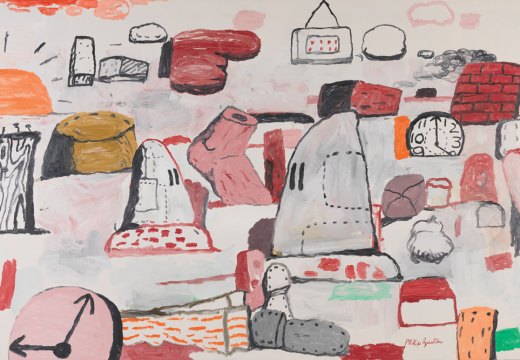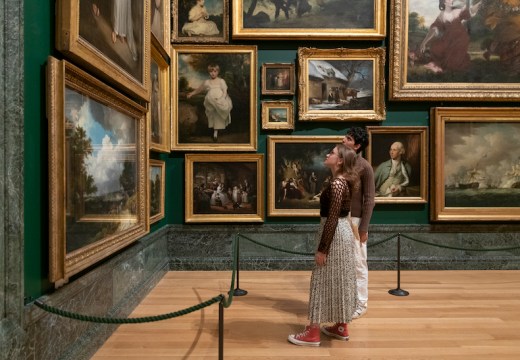Frances Morris
Three memories associated with Frances Morris plucked from the last few years: walking round the rehang of Tate Modern in 2016 and finding whole rooms dedicated to women artists such as Rebecca Horn and wanting to weep because the ‘secret’ art history so many of us had studied and written about for decades had finally leapt off the page and into the museum. Watching her, fiercely self-critical, at an environmental conference in 2020, questioning the sustainability of major museums’ urge to voracious acquisition and growth. Bumping into her in April 2023 outside ‘Hilma af Klint & Piet Mondrian: Forms of Life’, the last exhibition she co-curated as director of Tate Modern. I introduced her to a secondary school student I had brought on her first ever visit to an art gallery, and Morris chatted with her affably.
Morris joined the Tate in her twenties and rose to the directorship of Tate Modern in 2016, a role she stepped down from in April. Her 35 years at Tate have coincided with an era of transformation, both for the British gallery and for institutions globally. There have been seismic shifts in the status and visibility of curators, in the social role played by public museums, in the embrace of an expansive and diverse art history, and in the look and feel of cultural organisations as they took over former industrial spaces. Archivists have navigated the (belated) arrival of video, live performance and craft-associated media such as fibre. As audiences and institutions have grown, galleries have attracted public criticism over corporate sponsors, relation- ships with major donors and their response to global events. The Tate has been at the forefront of these global shifts and controversies. Even before her time as director, Morris has often found herself at the hot centre of things.
A graduate of London’s Courtauld Institute of Art, Morris started her curatorial career at the Arnolfini in Bristol in 1985. The shift to the Tate two years later was ‘like moving back a century in terms of curatorial practice,’ she recalls. At Arnolfini she had worked directly with artists, among them Helen Chadwick and Veronica Ryan. At Tate, which then occupied a single London location, a curator’s role was largely ‘the research into provenance, bibliography and very tight, narrow, objective meaning.’
There was entrenched prejudice about works considered appropriate for the collection. After Tony Cragg won the Turner Prize in 1988, the gallery acquired Britain Seen from the North (1981). Morris proposed the Tate also acquire Keith Arnatt’s photographs of ‘desolate waste-strewn landscapes’ which connected thematically to Cragg’s work. Photography? In the Tate collection? Absolutely not. It was not until 2000 that then-director Nicholas Serota commissioned Morris and Gregor Muir to review the status of photography and moving image in the collection.
The Tate is slow to change. The pressure to burst through its red tape often comes from artists. ‘I think every move I’ve made has been because I’ve been shamed by an artist,’ Morris tells me. An astonishing admission. I had seen Morris as a reformer, parlaying a dedicated space for performance art, engaging with international modernisms (note the plural), and driving the shift towards gender balance.
‘We were acquiring women, but there was no sense that we had to do any strategic levelling up. It’s pretty shameful: I think in one of the last rehangs in the early 1990s, there were three women,’ Morris recalls. ‘The idea that we needed to do something strategically didn’t happen until the early noughties.’ Her personal turning point came when she was publicly shamed by the Guerrilla Girls. Tate had just bought their work and held a big event in the auditorium. ‘Very publicly, they did their shout out about Tate not being much better than The Met. A journalist interviewed me later, and for the first time in my life, I felt I had nothing to say. Of course we weren’t doing enough.’
When Morris applied to become director of collections at Tate Modern in 2006, she made a commitment not only for the collection to become more international but also to start levelling up in terms of gender.
Together with Iwona Blazwick, Morris had already made waves with the opening display of Tate Modern, in 2000. That hang was thematic rather than chronological, and attracted a ferocious backlash. Morris and her colleagues were devastated, having ‘given it our all’ for over two years. Serota supported them, and nothing was changed. The rehang of 2016 was even more radical, looking to thematic alliances across diverse geographies, and giving far more space to women artists. Morris and her team were connecting far-flung practices and tendencies, but also looking to institutions and events that became hubs of influence within a region. ‘For me, that was the beginnings of unpicking my faith in an [Alfred H.] Barr model as being hegemonic.’
As Tate Modern’s director emerita, Morris retains a powerful sense of mission about the art world’s response to the climate emergency. The cause was brought to her by a group of artists gathered under the banner Culture Declares Emergency in 2019. Within months she was speaking forcefully about the urgency of meaningful change within the art world. Does she still feel museums’ acquisition policies are unsustainable? Absolutely. ‘Through that process of engaging with the climate emergency, I began to rethink my own position on collecting institutionally,’ she says. ‘It might now be a time to pull back and think more strategically.’

Frances Morris, director of Tate Modern, photographed at her home in London, in November 2023. Photo: Lewis Ronald
Unlimited access from just $16 every 3 months
Subscribe to get unlimited and exclusive access to the top art stories, interviews and exhibition reviews.















![Masterpiece [Re]discovery 2022. Photo: Ben Fisher Photography, courtesy of Masterpiece London](http://www.apollo-magazine.com/wp-content/uploads/2022/07/MPL2022_4263.jpg)
It’s time for the government of London to return to its rightful home